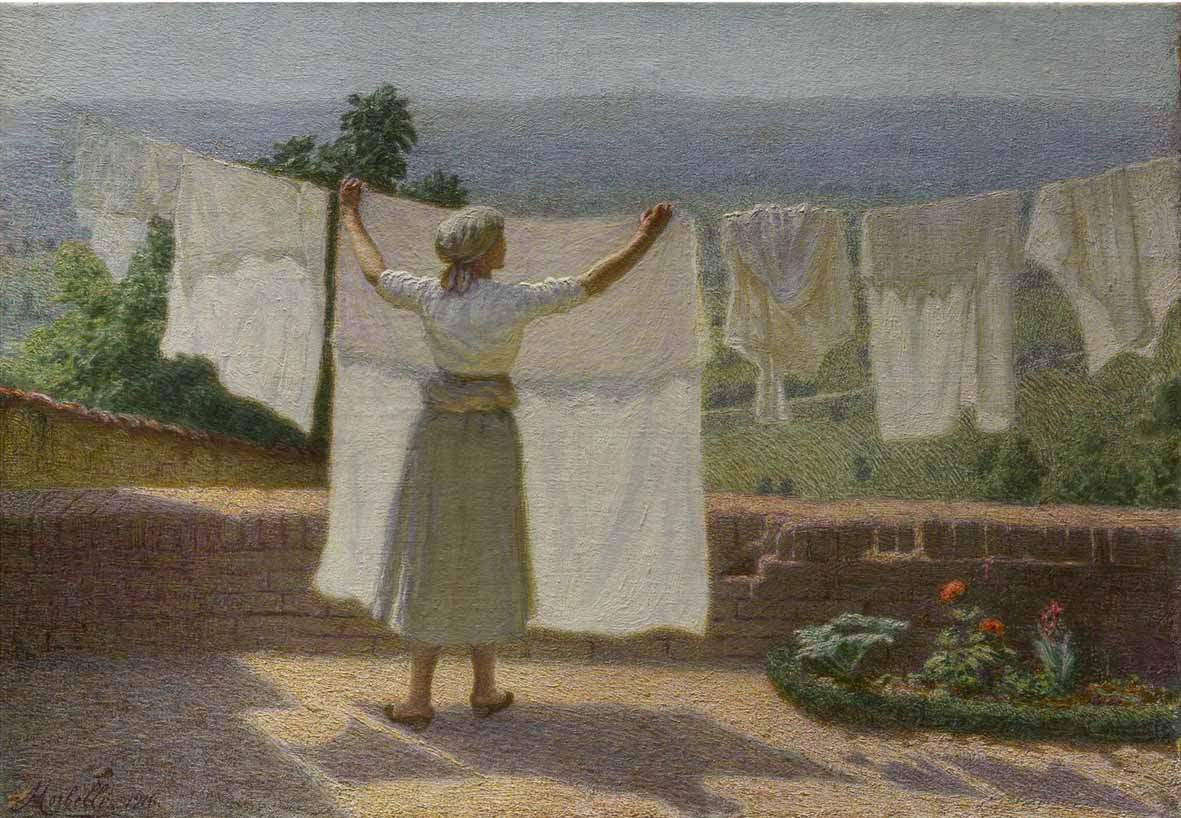Milan, Bottegantica dedicates an exhibition to Angelo Morbelli on the centenary of his death
From January 25 to March 16, 2019, Galleria Bottegantica in Milan is dedicating an exhibition to one of the greatest masters of the second half of the 19th century and Divisionism, Angelo Morbelli (Alessandria, 1853 - Milan, 1919), on the occasion of the centenary of his death. The exhibition, entitled Angelo Morbelli. Light and Color, and curated by Stefano Bosi and Enzo Savoia, presents a selection of key works, some never before exhibited, with the aim of documenting the evolution of Morbelli’s artistic path and his themes of choice. These include social realism, which the Piedmontese artist interprets with deep sensitivity and analytical capacity, and which is transmuted into positivity the times Morbelli approaches the varied theme of landscape. His landscapes dominated by the absence of figures and action, where the painter’s emotion finds full fulfillment in opening himself, in religious silence, to nature, which is the realm of things that renew themselves, the entity that possesses and gives life.
Examples are the airy landscapes of the glaciers of Valtellina or the mountains of Piedmont, the wide views of the Ligurian navy, the glimpses of the Venetian lagoon, caught mostly at sunset, and the sunny ones of the beloved garden of the country residence at La Colma, near Rosignano, in the hills of Monferrato. Mountains, sea, and woods are sung as lessons of true and authentic life, in which the artist’s soul seems to quiet down.
“In Morbelli’s work,” the curators explain, “realistic and symbolic dimensions parallel coexist. The meticulous realistic insistence, while immersing us in a precise reality, exasperates it, makes it appear to us in a different light, which takes away its credibility in the dimension of reality, immobilizes it, fixes it in emblem.” In Morbelli, the search for truth and the search for beauty, and for images suitable for expressing it, go hand in hand, as is evident in the paintings dedicated to the work of the mondine, the female nude and the adolescent universe of ballerinas. The latter production, in particular, is characterized by such formal refinement that it stands out as one of the highest moments achieved in painting by the artist, where vision bends to feeling, thanks in part to a skillful and controlled use of lighting and the elegant posing of the young creatures, caught in the fleetingness of a moment. The beauty and perfection of their forms escape from the excesses of an over-exhibited realism: rather than a realistic representation, we are faced with the exaltation of a new expressive intensity, occasioned by having given the figure the power to expand its own internal luminosity, in close relation to the quality of the light-environment in which it is dropped.
Angelo Morbelli. Light and Color also delves, with contributions from experts in the field, into the subject of technique, especially Divisionist technique, which he believed to be the painting of the future: the “business of the dots is for me,” the artist wrote in an 1895 letter to his friend Virgilio Colombo, “a practical exercise, like the piano scales. The ridicule to which colleagues slice crushing dots, resembles to me somewhat that of the masters of sailing ships against the first attempts at steamboats, seeming to them impossible that a pipe could do so much! The thing is predicted by us; but it will not make those with strong backs deviate an ette from their chosen path! In the meantime, greater results come to pass: air, light, illusion of planes and tones!”
The exhibition opens Tuesday through Saturday from 10 a.m. to 1 p.m. and 3 p.m. to 7 p.m. Admission is free. Possibility of guided tours by appointment at the price of 5 euros each. Catalog published by Bottegantica Edizioni. For info call 02 35953308 or 02 62695489, or visit the Bottegantica website.
Image: Angelo Morbelli, Distendendo i panni al sole (1916)
 |
| Milan, Bottegantica dedicates an exhibition to Angelo Morbelli on the centenary of his death |
Warning: the translation into English of the original Italian article was created using automatic tools. We undertake to review all articles, but we do not guarantee the total absence of inaccuracies in the translation due to the program. You can find the original by clicking on the ITA button. If you find any mistake,please contact us.





























